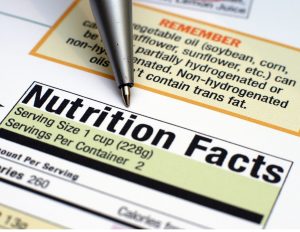 During March of each year, National Nutrition Month is celebrated. Along with encouraging informed, healthy food decisions, nutrition professionals can also use this awareness month to suggest ways to incorporate physical activity habits into an attainable, daily lifestyle routine. There is not a one-size-fits-all answer to how we can practice a healthy eating plan. To address this challenge throughout the year, The Academy of Nutrition & Dietetics chose this year’s theme to be “Personalize Your Plate”. Based on the age, activity level, and nutrition needs of the individual, key messages can be taught and a foundation for a healthier lifestyle can be achieved.
During March of each year, National Nutrition Month is celebrated. Along with encouraging informed, healthy food decisions, nutrition professionals can also use this awareness month to suggest ways to incorporate physical activity habits into an attainable, daily lifestyle routine. There is not a one-size-fits-all answer to how we can practice a healthy eating plan. To address this challenge throughout the year, The Academy of Nutrition & Dietetics chose this year’s theme to be “Personalize Your Plate”. Based on the age, activity level, and nutrition needs of the individual, key messages can be taught and a foundation for a healthier lifestyle can be achieved.
One key message is to eat a variety of nutritious foods every day. A varied diet helps provides a variety of different vitamins and minerals that our bodies need. Having a variety of vitamins provides many health benefits to our overall health. Making daily choices to achieve maximum health begins with the basic understanding of food labels. In addition to healthier food choices educating on the importance of hydration, knowing when to hydrate and how to make healthier. To get started with these key messages below are a few researched-based resources that provide both information and forms of engaging kids and other audiences in nutrition education to help adopt healthy lifestyle choices.
Academy of Nutrition & Dietetics National Nutrition Month Campaign Toolkit:
The toolkit provides individual files that can be added to your school’s website, electronic parent newsletters, or utilized by individual classes. The tip sheets cover a variety of topics and range in audience levels, and the games included provide a creative and engaging way to learn more about healthier choices.
A Few Highlights for School-Age Children:
- 20 Ways to Enjoy More Fruits and Veggies & Smart Snacking Tips for Kids
- Smart Snacking Tips for Kids
- Smart Tips for Getting Nutrients that May Be Lacking
- Nutrition Sudoku Easy, Word Search & Crossword Puzzle Website: https://www.eatright.org/food/resources/national-nutrition-month/toolkit
USDA MyPlate:
This website provides all recommendations from the U.S. Department of Agriculture for healthy eating pattern guidelines based on the Dietary Guidelines for Americans. The website contains a breakdown of each food group, suggestions based on specific age populations, recipes, videos, and other digital resources. They can be used with your school cafeteria staff, individual classrooms, or part of a parent newsletter for a great dinner time conversation activity.
A Few Highlights for School-Age Children:
- My Plate Pledge
- Creating Your Own MyPlate Menu
- Kids Food Critic Activity
- Fruit & Veggie Flash Cards Website: https://www.myplate.gov/
Action for Healthy Kids:
This website provides a comprehensive approach to create healthier school environments. On Action for Healthy Kids you will be able to assess your school’s health, find nutrition educational resources and physical activity programs. You can also apply for school grant opportunities and utilize an extensive resource library to improve school health policies and programs to help students thrive. These materials are helpful to School Health Advisory committees, individual classrooms, parent newsletters, and school websites.
A Few Highlights for School-Age Children:
- Healthy Eating Toolkit
- School health resource topics on nutrition and healthy eating, PE, physical activity and play, social-emotional health, and staff and family wellness
- Parent resources to improve health at home
- Recipes Website: https://www.actionforhealthykids.org/
FDA-U.S. Food & Drug Administration:
This website provides educator guides and resources to teach youth about nutrition food labels. In addition, they also provide food safety curriculum on how food should be handled in our food supply. These materials are beneficial for individual classrooms.
A Few Highlights for School-Age Children:
- How to read the label resources
- Science and our food supply curriculum
- Interactive healthy eating games Website: https://www.fda.gov/food/food-labeling-nutrition/nutrition-education-resources-materials
Contributed By:
Lori Johnson MS, RD, LD/N
Family & Consumer Science Agent, UF/IFAS Extension, Lake County
